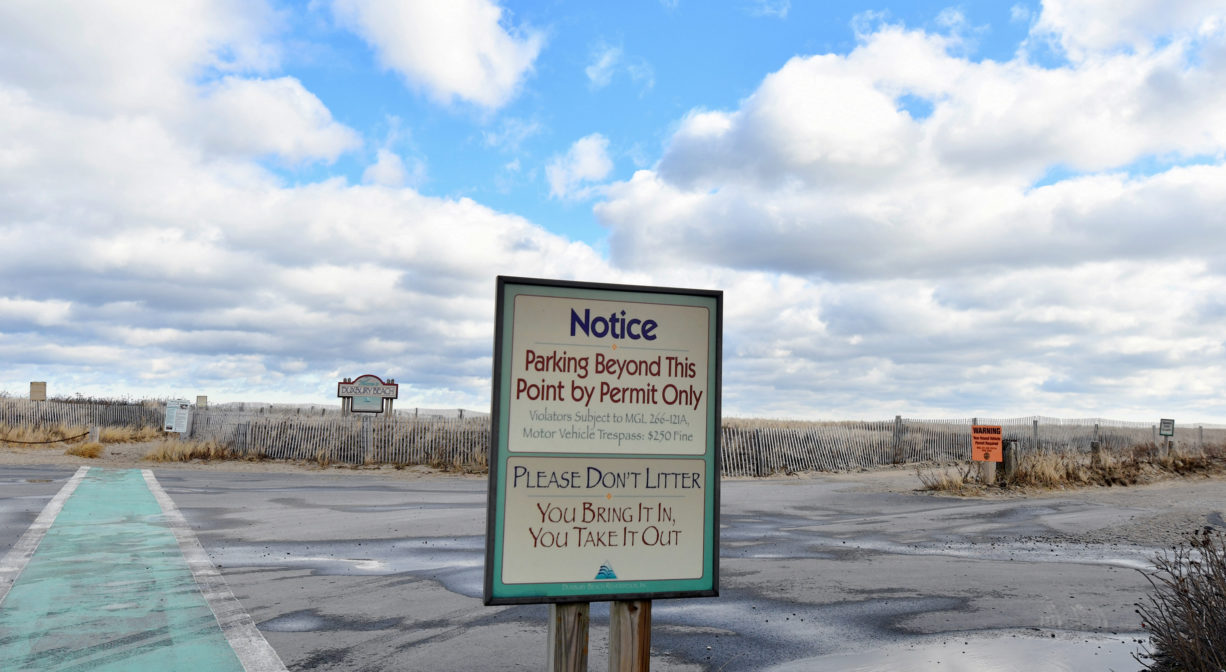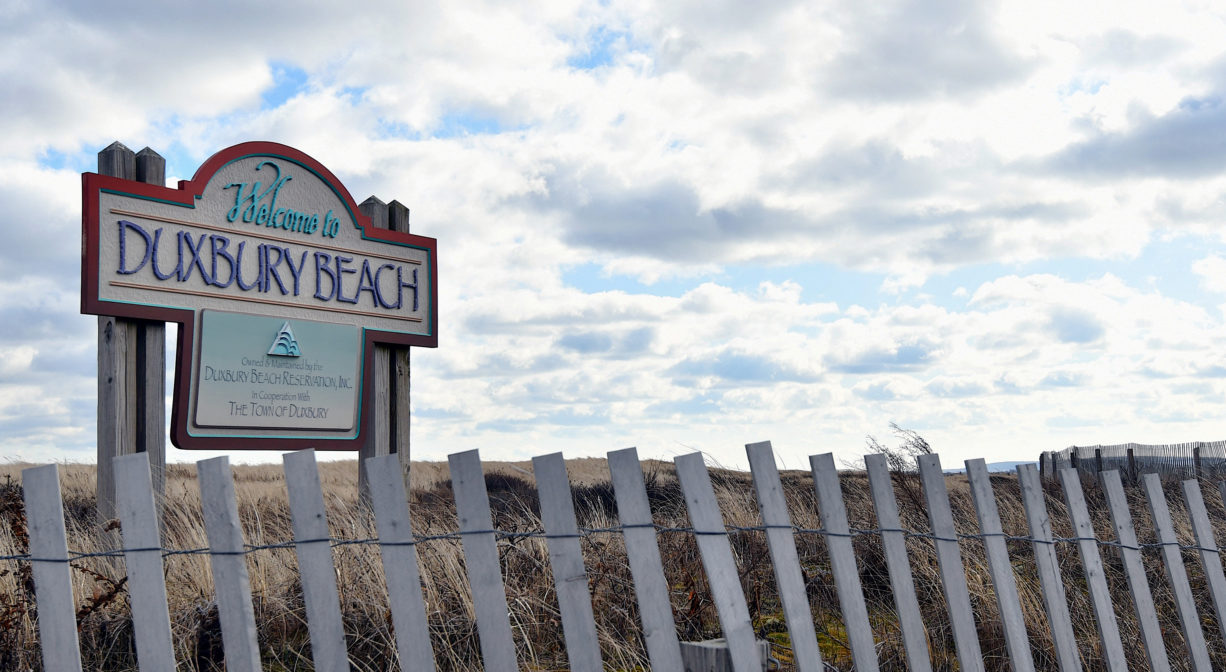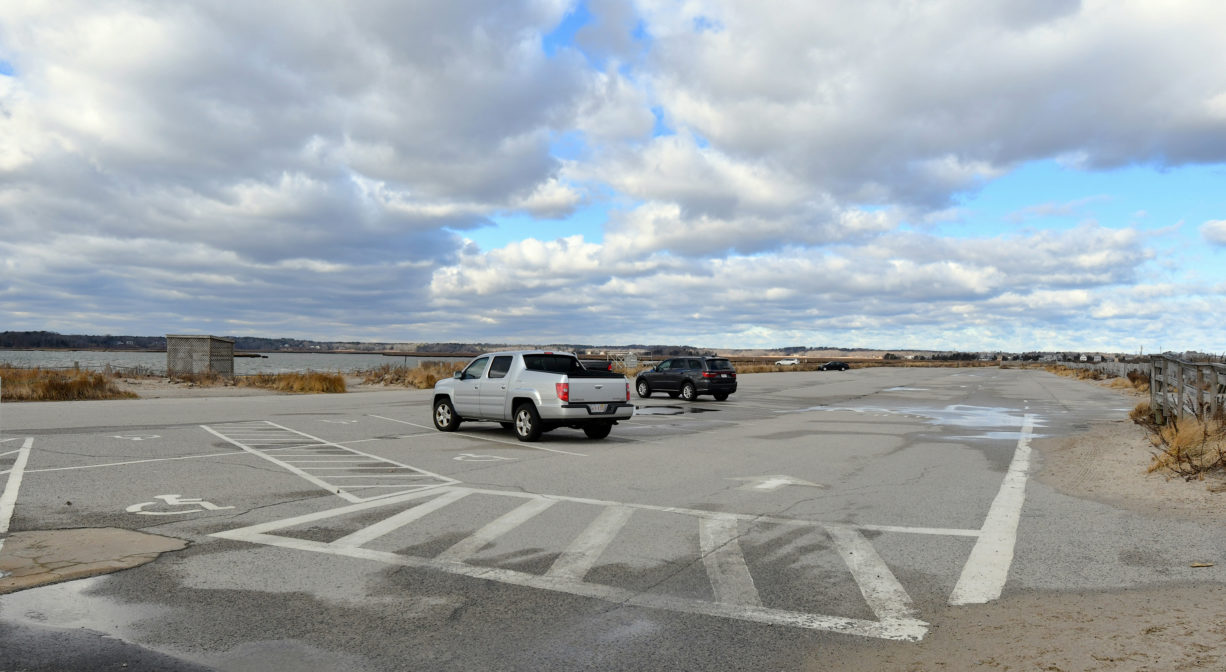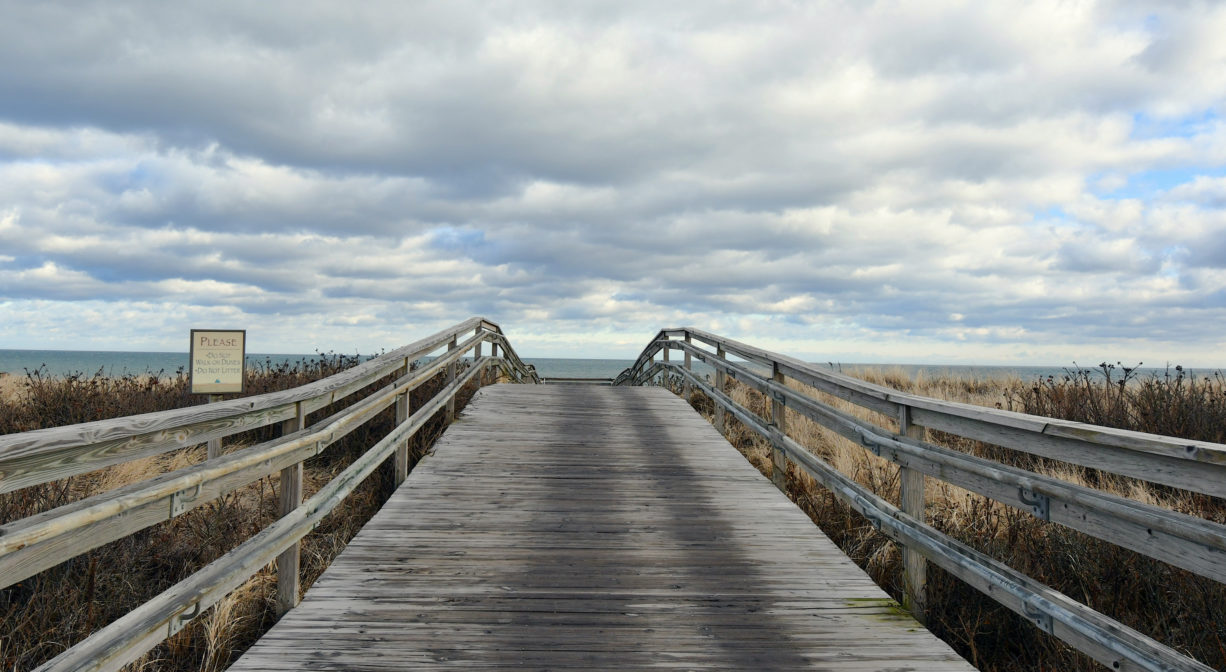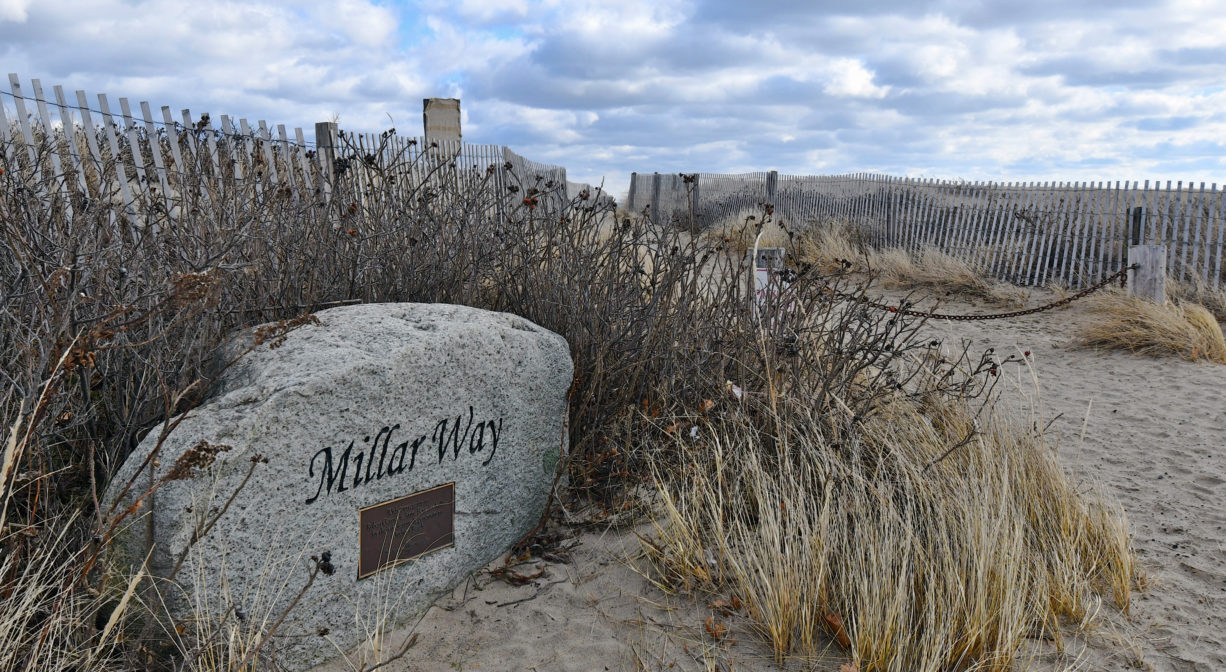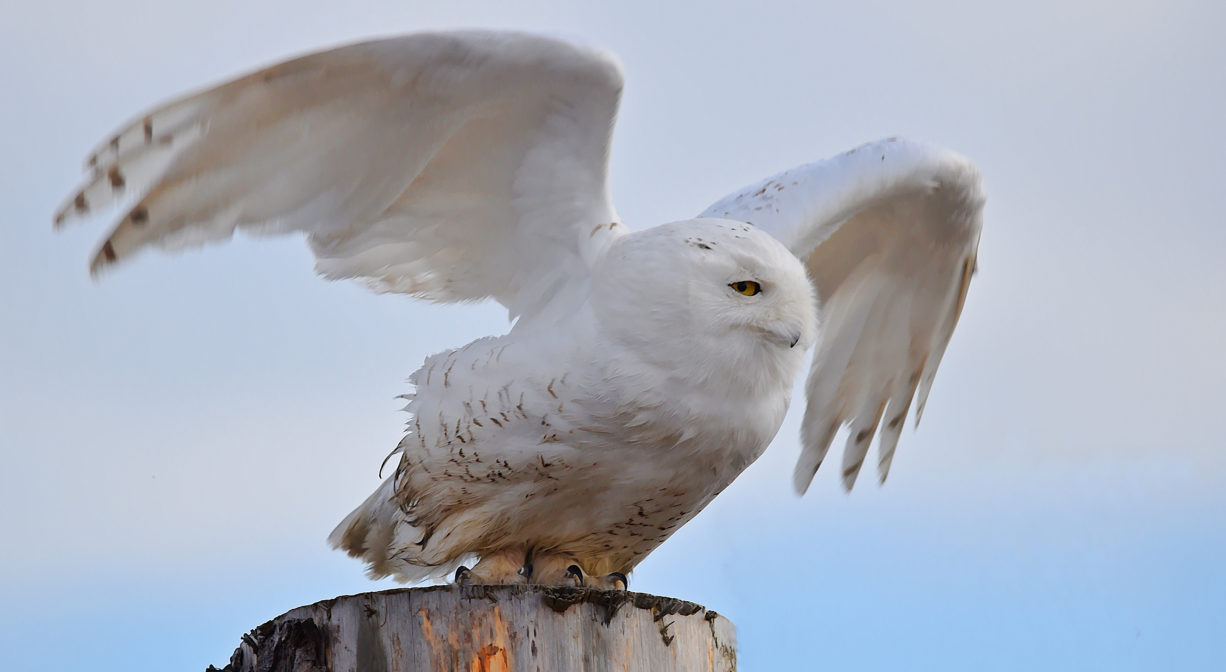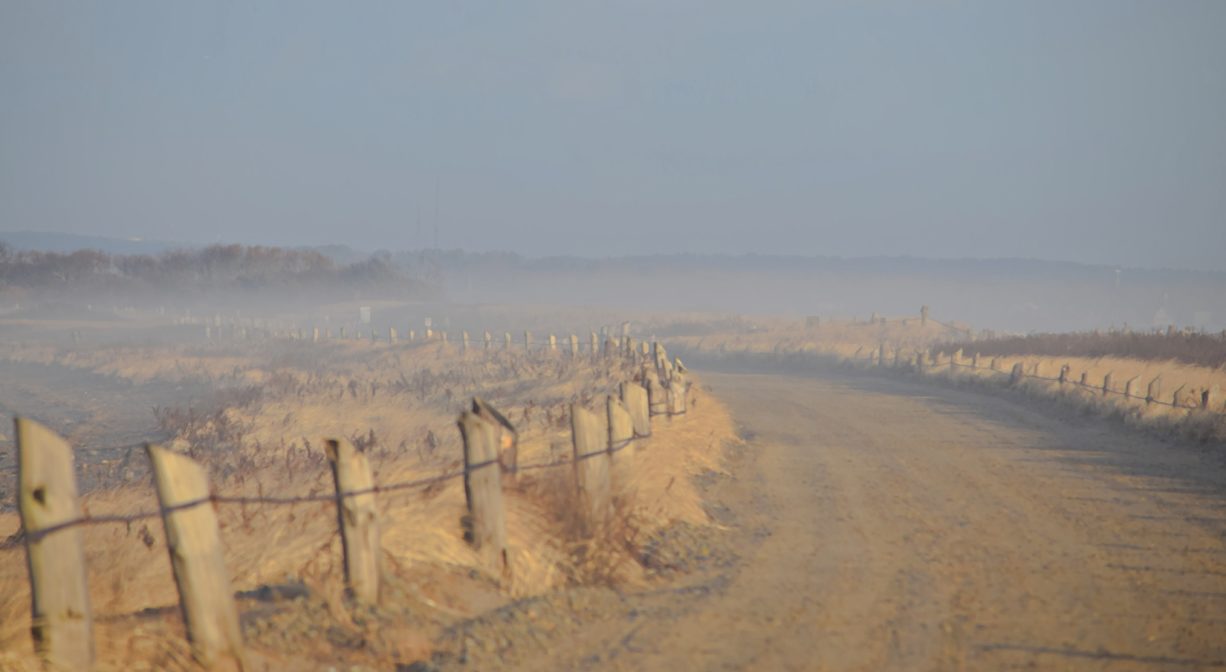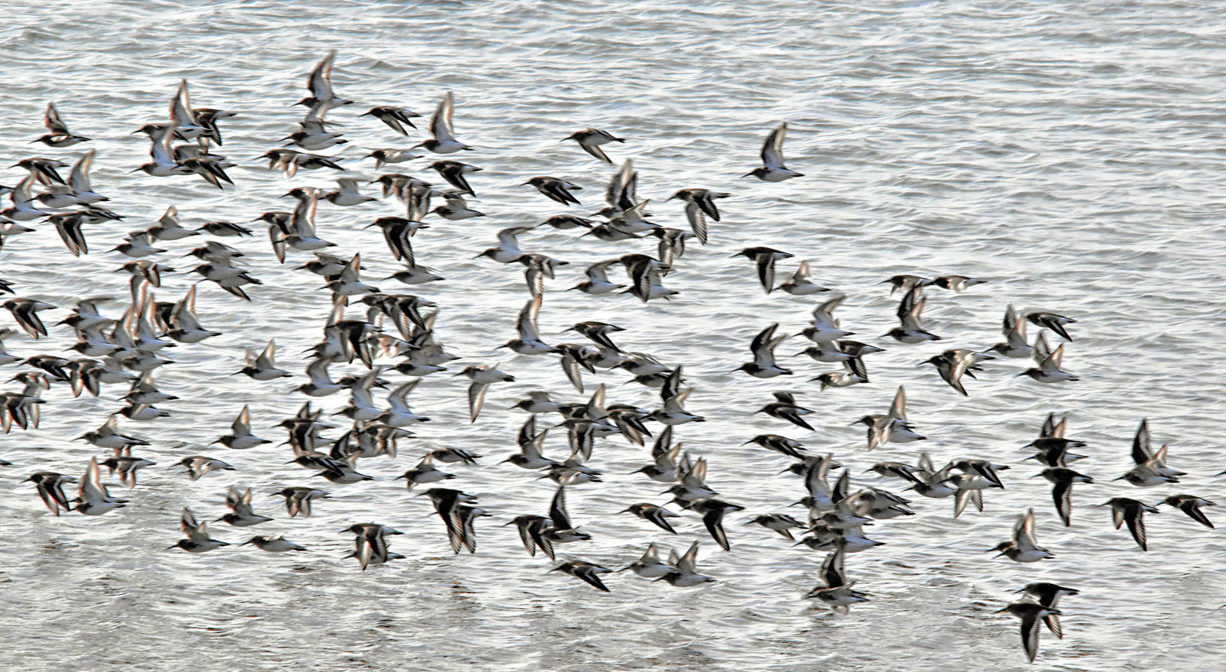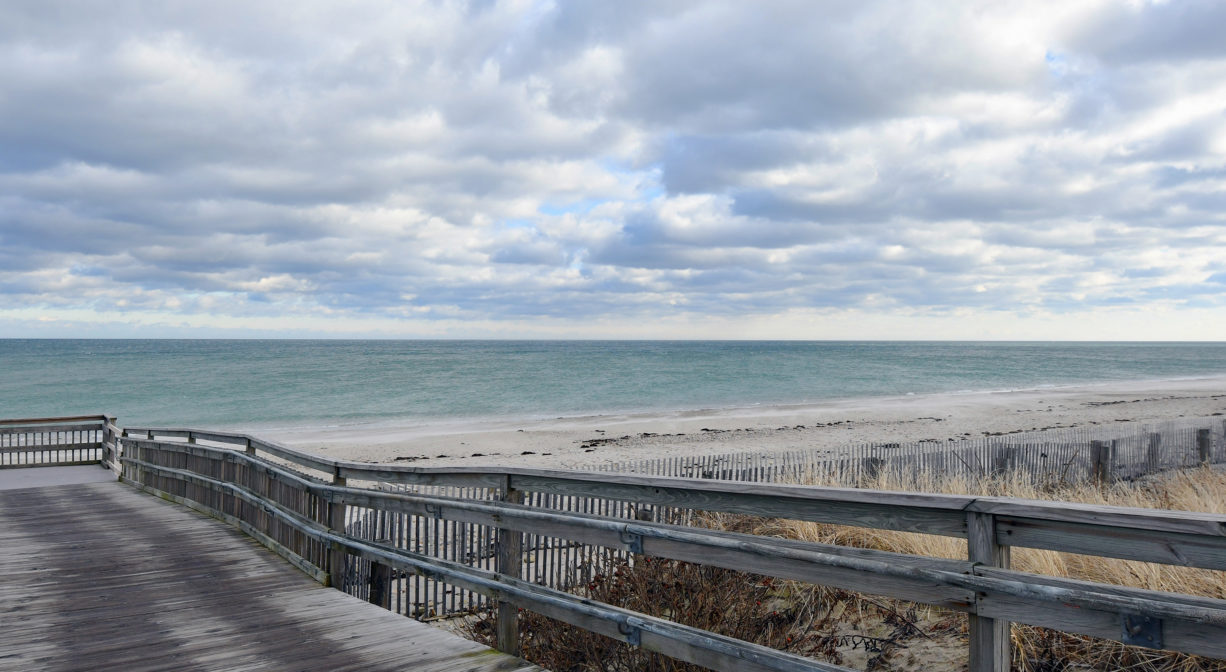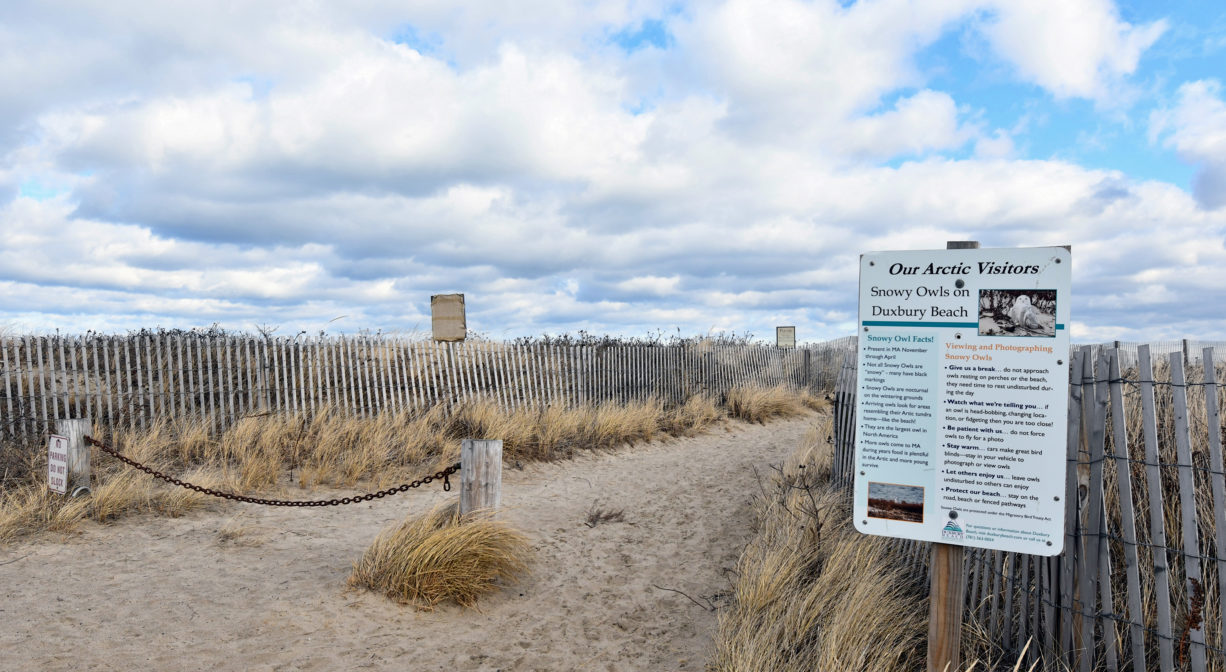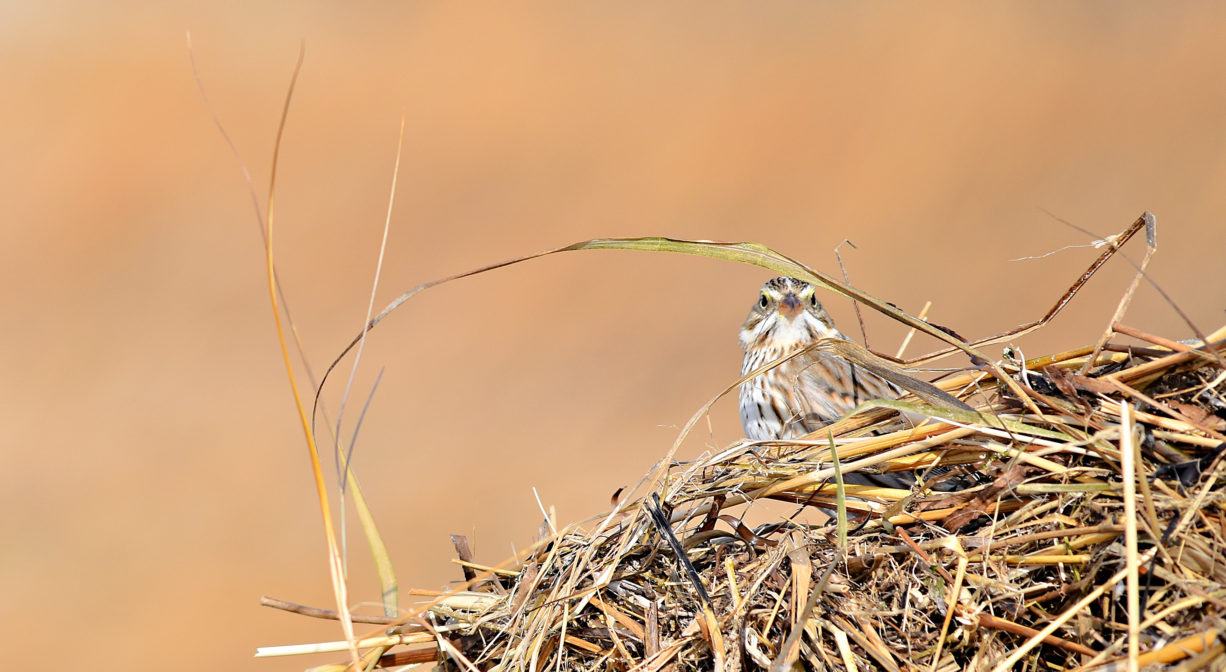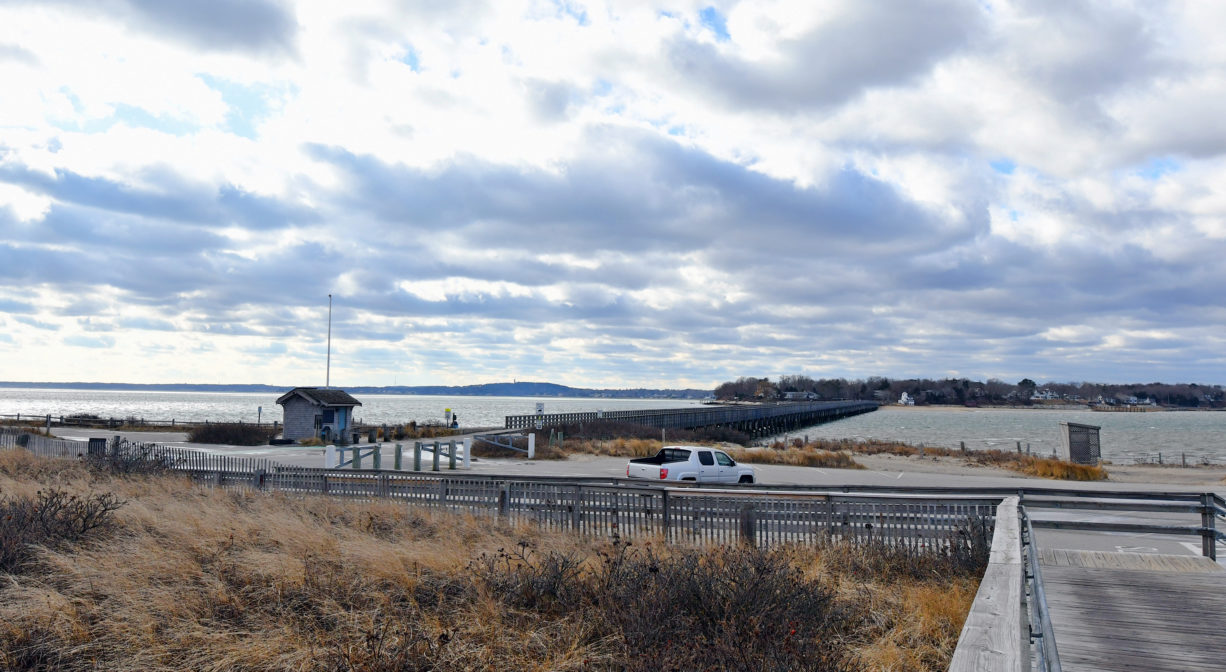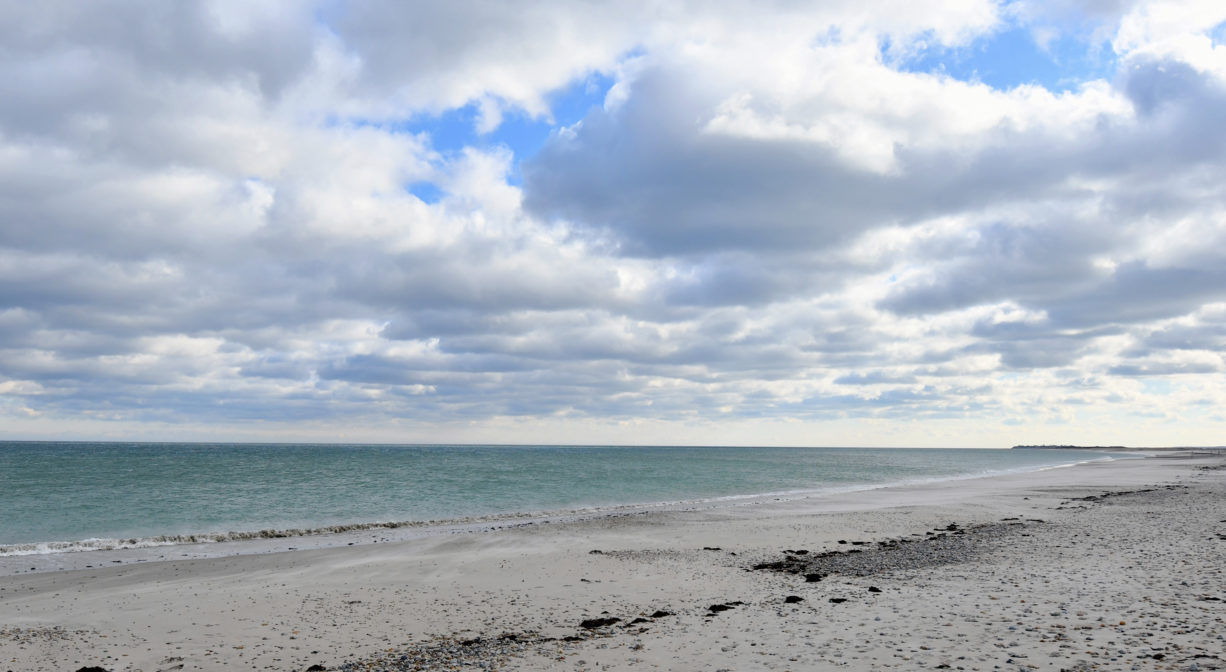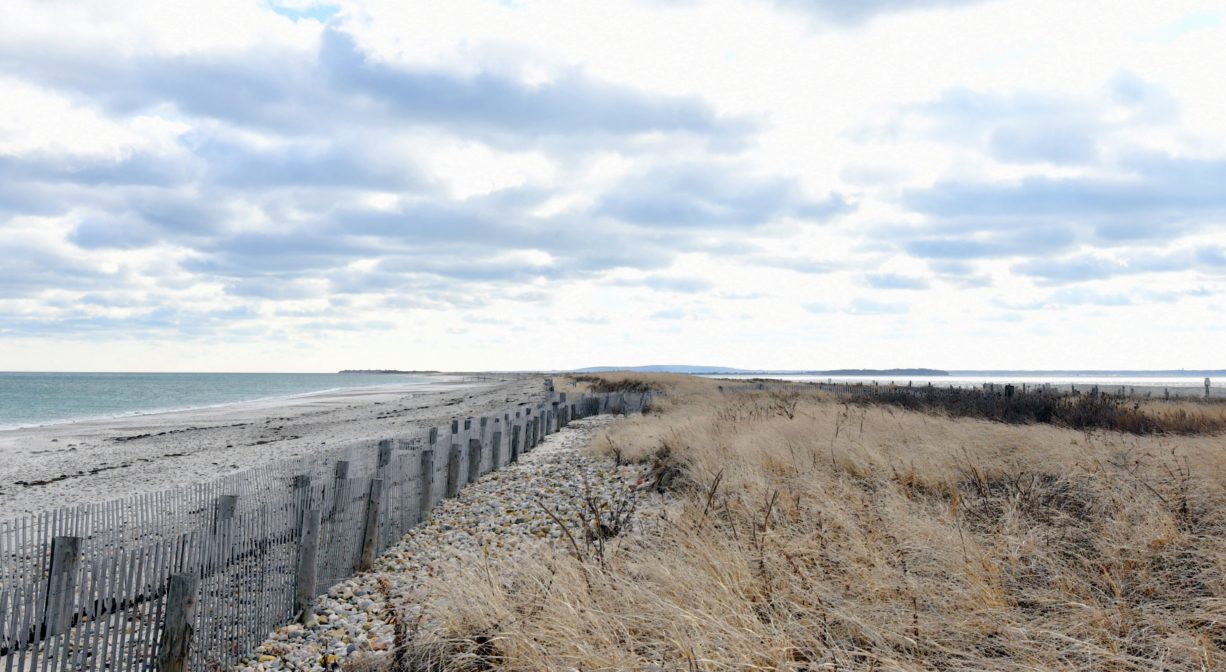260 Gurnet Rd, Duxbury, MA 02332, USA
info@duxburybeachreservation.org
https://www.duxburybeachreservation.org
Owned By: Duxbury Beach Reservation, Inc.
Duxbury Beach Reservation is a clean, beautiful, family-friendly beach, nestled between Duxbury Bay and the Atlantic Ocean. Access to Duxbury Bay is also available here for fishing, shellfishing, and paddling.
In season (Memorial Day to Labor Day), parking at Duxbury Beach Reservation, as well as driving over sand along designated beach roadways, requires a sticker. Pedestrian access is free. The town sells resident parking stickers for the parking lot and oversand parking stickers to both residents and nonresidents. An oversand vehicle permit (OSV) is needed year-round to access the “back” road, pullouts, and crossovers that allow access to the oceanside beach via vehicle.
Off-season (after Labor Day), the Duxbury Beach Reservation resident parking lot is free and open to the public. Pedestrian access is free year-round, although there are restrictions for pedestrians who walk dogs during the piping plover and least tern nesting season.
Note: right next door is Duxbury Beach Park which is open to the public in-season only, with a cash-pay parking lot. Or park in the very small (no fee) lot at the western end of the Powder Point Bridge.
Both Duxbury Beach and Duxbury Beach Park are accessible during the summer season via mobility mats and boardwalk ramps. There is also a beach wheelchair available at the guardhouse upon request.
Hunting is not allowed Duxbury Beach at any time.
FISHING ADVISORY: It’s important to know that some of our fisheries are contaminated with mercury, PFAS and/or other concerning substances. The Massachusetts Department of Public Health maintains an online database with up-to-date advisories regarding fish consumption, sorted by location. We recommend you consult this valuable resource when planning a fishing excursion.
Features
Duxbury Beach Reservation, Inc. (DBR) is the nonprofit organization that owns the portion of Duxbury Beach that extends from Gurnet Road at its northern boundary to the entrance to Gurnet Point and Saquish at its southern end. DBR leases a large portion of the beach to the town of Duxbury for use by Duxbury residents and the general public. The leased portion extends from the resident parking lot to the Gurnet-Saquish guard gate.
DBR has kept its most northerly portion of Duxbury Beach for use by the general public. Called Duxbury Beach Park, this facility is open from Memorial Day to Labor Day, with a daily parking fee. Access to Duxbury Beach Park is from Marshfield, following Canal Street to Gurnet Road. There is also access from the east end of the Powder Point Bridge via the resident parking lot.
The snack bar, called Duxbury Beach Park Pavilion, was built in 1941. It is more commonly referred to as Blakeman’s, the name of local Duxbury school teacher Ralph Blakeman, who ran the snack bar and parking lot for many years. Blakeman’s provides restrooms, showers, and food, including wine and beer. Fires, horses, dogs, alcohol, and kites are NOT permitted on the beach itself.
Duxbury Beach was familiar to the Patuxet Wampanoag tribe, who for centuries inhabited the area around the Jones River now known as Duxbury, Kingston, and Plymouth. Numerous Native American artifacts have been found on Clark’s Island, which is located between the barrier beach and the mainland of Duxbury. To learn more about local Native American tribes, we encourage you to interact with their members. The Mashpee Wampanoag and the Herring Pond Wampanoag share information on their websites.
The group of private owners who bought the beach in 1919 to protect it from developers were known as the Duxbury Beach Association (DBA). In 1975, the DBA reorganized as a Massachusetts nonprofit organization, becoming the Duxbury Beach Reservation, Inc. (DBR). Its mission is to preserve the barrier beach that safeguards the adjacent bays and mainland, protect wildlife and vegetation while welcoming the public to enjoy this beautiful site. Like its predecessor, DBR continues to lease the beach to the town.
After the advent of the automobile, over-sand vehicles became common on Duxbury Beach. As vehicle numbers increased, they caused damage to the dune structures. In 1954, Hurricane Carol served as a wake-up call, and citizens became concerned with beach preservation. The dunes were rebuilt, snow fence was installed, and beach grass was planted to help prevent sand from washing away. Eventually, town meeting approved a summer traffic patrol.
In 1978, the infamous blizzard caused 26 major wash-throughs, plus numerous partial breaches. Many dunes were flattened, and deep drifts of sand and stone covered the main parking area. Several sections of the road to Gurnet and Saquish were completely destroyed. Beach conservation efforts intensified. It took several years, but a right-of-way along the bay side of the beach was constructed, sharply delineated by post-and-cable fencing. Snow fence and grass planting efforts were stepped up, and over time the beach was significantly restored.
The No-Name Storms of 1991 and 1992 were even more destructive. Again, there were breaches and numerous wash-overs. Much of the dune structure was flattened, and the road to Gurnet and Saquish sustained major damage. The Federal Emergency Management Agency (FEMA) paid 75 percent of the $1 million cost, and did so again following the 1992 storm. That was the last time FEMA provided storm damage funds. Currently, there are no federal funds available for storm damage.
Prior to 1992, vehicles could drive almost anywhere on the beach, but beginning that year, the DBR began restricting traffic to a single lane, east of the dunes. Two crossovers provided access to the beach, and on-beach parking was permitted only in a single line in a designated area. Today, there are 3 crossovers. Access is restricted to residents and non-residents who have purchased an oversand vehicle permit (OSV) through the town of Duxbury. Permits are required year-round.
You may ask, “Why non-residents?” The fact that Duxbury Beach has always been accessible to the public is one of the primary factors in its continued existence. In the 1950’s and 1960’s, the state made a number of attempts to take the beach by eminent domain. Because the DBR could prove that there was public access to the beach through non-resident OSV permits as well as daily fee access at Duxbury Beach Park, it was able to maintain ownership.
In 1986, piping plovers were designated as a federally threatened species. In 1990, a pair of piping plovers were discovered on Duxbury Beach. In 1993 three pairs were discovered, and by the end of the 1990s 12-14 pairs were present. By 2023, over 40 pairs were nesting on Duxbury Beach. As a result, beach access to the oversand portion of Duxbury Beach has been restricted during the summer months. In the early years, the town provided monitors to gather data and protect the plovers, but in recent years, DBR has taken over that role.
Another major change occurred in 2017 when DBR hired its first ever professional manager. Prior to that event, DBR was totally managed by its volunteer trustees. Today, professional staff manage all aspects of nourishing the dunes, maintaining the road to Gurnet-Saquish, and complying with federal and state plover and least tern regulations. A volunteer Board of Directors and group of Trustees continue to oversee the organization and provide important direction. The town of Duxbury, through the beach lease, is responsible for managing public access and vehicles, both in the resident parking lot and along the drive-on portion of the outer beach.
Duxbury is bound by state law to keep the road to Gurnet-Saquish open, and bound by federal law to protect the piping plovers. All of this requires money, and without recreational access to the beach and support from the community, there would be no money for ecological concerns. Without tireless efforts to preserve the beach, there would be no beach left to enjoy. It’s a delicate balance.
To learn more about Duxbury Beach and DBR, read the excellent Duxbury Beach Book by Margaret M. Kearney and Kay Foster (2007).
Trail Description
4 miles of sandy beach provide plenty of room to roam. Also consider walking on the unpaved road that runs south from Marshfield on the bay side of the property.
Habitats and Wildlife
Waters flowing from an extensive salt marsh in Green Harbor and along the Marshfield-Duxbury line, as well as from the Cut River and the Duck Hill River, join together to form Duxbury’s Back River, which enters Duxbury Bay at the Powder Point Bridge, and then empties into Cape Cod Bay. The Back River is visible from the “back” (as opposed to oceanfront) side of Duxbury Beach Reservation.
A 2018 survey indicates that the numbers of species observed on Duxbury Beach are as follows. Birds: 127, Mammals: 8, and Plants: 36. Some notable visitors are horseshoe crab, snowy owl, piping plover, and least tern. The latter two have been designed protected species by state and/or federal law. Duxbury Beach Reservation’s Endangered Species Program offers protection for nesting piping plover and least tern during the spring and summer.
Like all barrier beaches, Duxbury Beach is dynamic. Sand arrives and departs at a slow pace. Here at Duxbury, the beach is moving westward toward the mainland. Unfortunately, due to heavy armoring of beaches to the north (seawalls), Duxbury Beach is not receiving natural nourishment of sand. There are seasonal dynamics as well. In the winter and spring, the beach is rocky, as northeasterly winds pull the sand out. In the summer and fall, the sand returns, carried in by gentle waves.
While storm damage has long been an issue, rising sea levels and intensified storms now are cause for major concern. In 2019, DBR started the permitting process for proactive dune and beach nourishment projects so the organization is now able to plan and complete beach work before storms occur instead of reacting after the storm has done its damage. Information on this coastal resiliency work is available at: www.duxburybeachreservation.org
Historic Site: No
Park: No
Beach: Yes
Boat Launch: Yes
Lifeguards: Lifeguards in season.
Size: 4 miles of beach
Hours: The beach is open year-round. Hours vary seasonally. Please visit Town of Duxbury Beach Operations website for current information: www.town.duxbury.ma.us/beach-operations
Parking: In season, the large on-site parking area requires resident sticker. After Labor Day, parking is free and open to the public. In season non-resident parking (for a fee) is available at Duxbury Beach Park, immediately adjacent.
Cost: Resident parking sticker required in-season.
Trail Difficulty: Easy
Facilities:
Porta-potties in season. Handicap access ramp and mobility mats in season. In addition, a beach wheelchair is available by request from a guardhouse attendant at the Powder Point Bridge entrance.
Dogs: Dog walking on Duxbury Conservation Lands and Duxbury Beach requires a Dog Walking permit available at Duxbury Town Hall. Seasonal dog regulations are in place April 1 – Sept. 15, please visit: www.town.duxbury.ma.us/beach-operations for complete rules.
Boat Ramp: No
ADA Access: Both Duxbury Beach and Duxbury Beach Park are accessible during the summer season via mobility mats and boardwalk ramps. There is also a beach wheelchair available at the guardhouse upon request.
Scenic Views: Yes
Waterbody/Watershed: Duxbury Back River / Duxbury Bay

